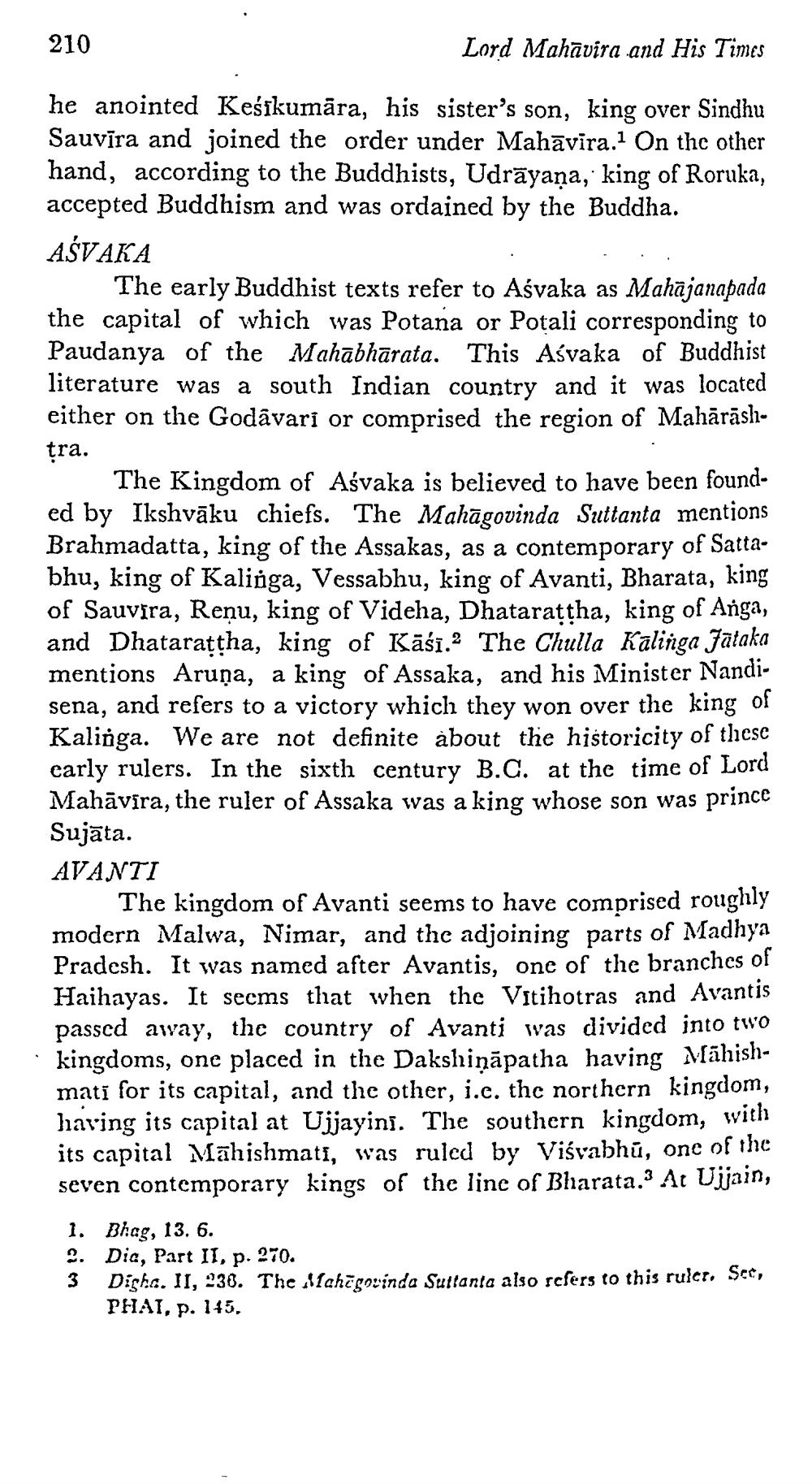________________
210
Lord Mahavira and His Times
he anointed Keśíkumāra, his sister's son, king over Sindhu Sauvīra and joined the order under Mahāvira.1 On the other hand, according to the Buddhists, Udrāyana, king of Roruka, accepted Buddhism and was ordained by the Buddha. AŚVAKA
The early Buddhist texts refer to Aśvaka as Mahājanapada the capital of which was Potana or Potali corresponding to Paudanya of the Mahabharata. This Ašvaka of Buddhist literature was a south Indian country and it was located either on the Godavari or comprised the region of Mahārāslitra.
The Kingdom of Aśvaka is believed to have been founded by Ikshvāku chiefs. The Mahāgovinda Suttanta mentions Brahmadatta, king of the Assakas, as a contemporary of Sattabhu, king of Kalinga, Vessabhu, king of Avanti, Bharata, king of Sauvira, Reņu, king of Videha, Dhatarattha, king of Anga, and Dhatarattha, king of Kāśī.2 The Chulla Kalinga Jataka mentions Aruņa, a king of Assaka, and his Minister Nandisena, and refers to a victory which they won over the king of Kalinga. We are not definite about the historicity of these early rulers. In the sixth century B.C. at the time of Lord Mahāvīra, the ruler of Assaka was a king whose son was prince Sujāta. AVANTI
The kingdom of Avanti seems to have comprised roughly modern Malwa, Nimar, and the adjoining parts of Madhya Pradesh. It was named after Avantis, one of the branches of Haihayas. It seems that when the Vitihotras and Avantis passed away, the country of Avanti was divided into two kingdoms, one placed in the Dakshiņāpatha having Māhishmatí for its capital, and the other, i.e. the northern kingdom, having its capital at Ujjayinī. The southern kingdom, with its capital Māhishmati, was ruled by Viśvabhū, one of the seven contemporary kings of the line of Bharata.3 At Ujjain, 1. Bhag, 13. 6. 2. Dia, Part II, p. 270. 3 Digha. II, 30. The Alahogorinda Suttanta also rcfers to this rulcr. See,
PHAI, P. 143.




